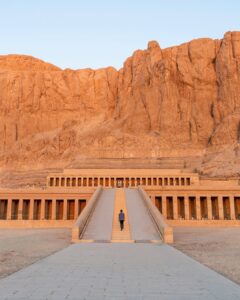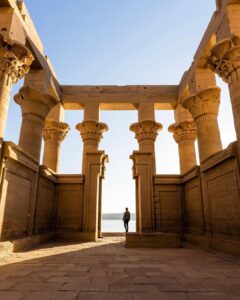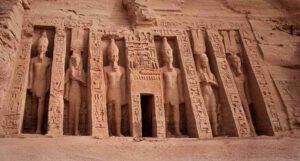The Step Pyramid of Djoser
At the heart of Saqqarah lies the Step Pyramid of Djoser, a marvel of ancient engineering and the first pyramid ever constructed. Built during the Third Dynasty by the architect Imhotep, this pyramid marked a revolutionary shift in burial practices, setting the stage for the iconic pyramids of Giza.
Tombs and Mastabas
Saqqarah is home to a labyrinth of tombs and mastabas, offering a glimpse into the lives and beliefs of ancient Egyptians. These structures, adorned with intricate reliefs and hieroglyphs, served as eternal resting places for pharaohs, nobles, and officials.
Art and Artifacts
The site is a treasure trove of ancient art and artifacts, including statues, reliefs, and funerary goods. These priceless relics provide invaluable insights into ancient Egyptian culture, religion, and daily life.
Historical Importance
Saqqarah played a pivotal role in ancient Egyptian society, serving as a center of religious worship and royal burial. Its significance extends beyond mere mortuary practices, offering clues to the spiritual beliefs and cultural practices of the time.
Renovation and Preservation Efforts
In recent years, concerted efforts have been made to preserve and protect Saqqarah’s fragile archaeological heritage. Restoration projects aim to safeguard the site for future generations while ensuring its continued study and exploration.
Tourism and Visitor Experience
For tourists, Saqqarah offers a unique opportunity to step back in time and experience the wonders of ancient Egypt up close. Guided tours provide insights into the site’s history and significance, while allowing visitors to explore its labyrinthine passages and chambers.
Research and Discoveries
Ongoing excavations at Saqqarah continue to yield new discoveries, shedding light on previously unknown aspects of ancient Egyptian civilization. These findings contribute to our understanding of Egypt’s rich and complex history.
Cultural Significance
Recognizing its cultural and historical importance, Saqqarah has been designated a UNESCO World Heritage Site. This prestigious status underscores its significance as a testament to human ingenuity and creativity.
Conclusion
Saqqarah stands as a testament to the enduring legacy of ancient Egypt, a monument to the achievements of a civilization that flourished thousands of years ago. As visitors wander its hallowed grounds, they are transported back in time, immersed in the wonders of a bygone era.
FAQs
What is the significance of Saqqarah in ancient Egypt? Saqqarah served as the burial ground for the ancient capital of Memphis and is home to the iconic Step Pyramid of Djoser, among other archaeological wonders.
How old is the Step Pyramid of Djoser? The Step Pyramid of Djoser dates back over 4,600 years, making it one of the oldest stone structures in the world.
Can visitors enter the tombs and mastabas at Saqqarah? Yes, many of the tombs and mastabas at Saqqarah are open to visitors, providing a fascinating glimpse into ancient Egyptian burial practices.
What artifacts have been discovered at Saqqarah? Saqqarah has yielded a wealth of artifacts, including statues, reliefs, and funerary goods, which are now housed in museums around the world.
How can I visit Saqqarah and what should I expect during my visit? Visitors can arrange guided tours to Saqqarah from Cairo, typically lasting half a day. Expect to explore ancient tombs, marvel at ancient architecture, and learn about Egypt’s rich history from knowledgeable guides.














